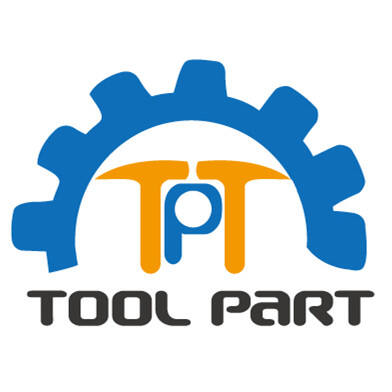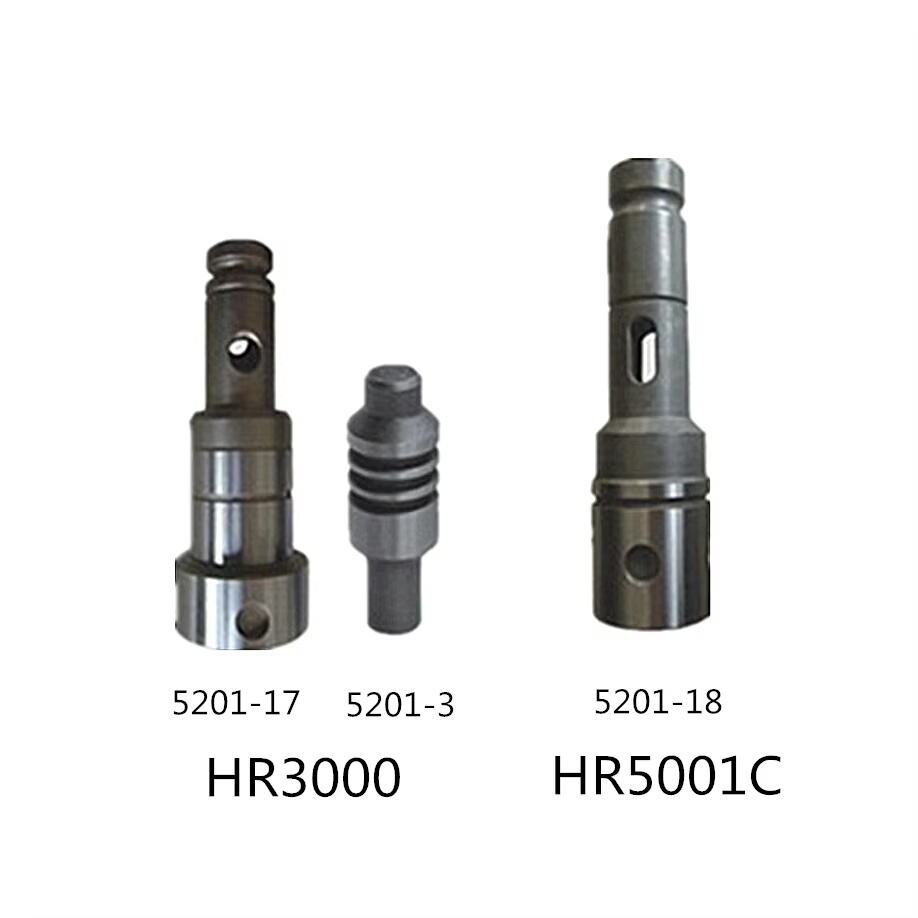De ce Menținerea Suportului pentru Unelte Este Crucială pentru Durabilitate
Suportul de unelte care este necesar pentru o viață utilă lungă a instrumentelor de precizie. Menținerea corespunzătoare menține suportul de unelte într-o stare bună și facilitează procesarea precisă, reducând și timpul necesar pentru schimbarea suportului de unelte, ceea ce reduce daunele legate de uzura. Verificarea regulată și îngrijirea suportelor noastre de unelte atenuează aspectele legate de daunele unorilor și minimizează mici probleme care ar putea să se dezvolte în probleme mari, ceea ce, ca urmare, împiedică nevoia unei noi unelte și economisește niște cheltuieli. Dar tot acel proces de eliminare a materialelor uzurează și uneltele - iar îngrijirea suportelor de unelte este mai mult decât doar să păstrăm mașinile cu unelte să funcționeze neted; aceasta afectează direct calitatea și acuratețea a ceea ce construim.
Menținerea periodică a suportului de unelte previne, de asemenea, eșuarea echipamentelor, reducând astfel timpul de întrerupare al mașinii și creșând producția. Fără a se pune la îndoială, practicile industriale privind menținerea de bază și verificările (curățenie, inspecție & lubrificare) le pot ajuta să identifice probleme potențiale. Această abordare garantează o operațiune mai continuă și stabilă, ceea ce crește în general eficiența producției. Reducerea timpului de întrerupare. Nimeni nu-și permite întreruperi neașteptate și pierderea financiară legată de contracte poate fi adesea mai gravă.
Este o practică financiară nesănătoasă, deoarece poate fi scump să le reparați sau să le înlocuiți. Efectuarea unei întreținere regulate a suportelor de unelte previne situațiile în care accidentele sudești necesită înlocuirea de urgență a noilor părți sau reparațiile costisitoare ale componentelor. Aceste costuri neașteptate pot avea un impact mare asupra bugetului, în timp ce „întreținerea”, care este preventivă, poate fi anticipată și de obicei este mai ieftină. Ca rezultat, un atelier care investește în timp și resurse pentru a menține eficient suportele de unelte în mod regulat se poate afla pe drumul spre o viață lungă a acestor investiții de muncă și a unei vieți care pot să ajute compania să rămână în plus.
Ghid pas cu pas pentru curățarea șemantelor de unelte
Eliminarea prafurilor și reziduurilor de lichid refrigerant
Curățarea suportelor de unelte este foarte importantă pentru o performanță ideală și o viață utilă lungă. Începeți prin a scoate suportul de unelte din mașină. Asigurați-vă că îl verificați pentru a vedea dacă nu sunt fragmente metalice sau alte deșeuri pițuite, deoarece acestea sunt adesea vinovatele care pot afecta conduita. Curățați ușor și cu grijă pentru a elimina fragmentele, luând în calcul să nu grafiți nicio suprafață. Acest lucru este extrem de important, deoarece aceleași substanțe grasoase pot influența ajustarea și funcționarea suportului de unelte. Pentru mărci mai grele ale lichidului de răcire, folosiți un țesut umplut cu solvent pentru a curăța complet fără a provoca zgârieturi.
Alegerea agentilor de curățare eficienți
Alegerea produselor de curățare adecvate pentru suportele de unelte este de asemenea foarte importantă pentru evitarea daunelor și pentru o utilitate pe termen lung. Alegeți curățători care sunt fabricați specific pentru piese metalice, deoarece aceștia vor dizolva uleiurile fără a ataca suprafețele. Opțiuni obișnuite sunt alcoolul izopropilic și curățători industriali. Validați întotdeauna că solvenții sunt compatibili cu proprietățile materialelor suportului de unelte pentru a preveni coroziunea sau uzurarea ne-dorită.
Proceduri de uscat după curățare
Secarea corespunzătoare a suportelor de unelte este esențială pentru a evita oxidația și alte probleme legate de umiditate. Lăsați toate părțile să se usuce pe aer în mod complet sau usurați-le ușor cu aer comprimat, dar aveți grijă să nu introduceți umiditate în zone greu accesibile. Acest lucru asigură, de asemenea, că nici apa, nici detergentele nu rămân piptate și nu cauzează coroziune sau daune. Și stocați suporte de unelte într-un loc uscat, ceea ce le menține intacte și pregătite pentru următoarea folosire, de asemenea ele vor fi încă în stare bună pentru următorul dvs. proiect.
Practici de Ungherire Pentru o Funcționare Fluidă
Selectarea Lubricantelor Conform Standardelor Industriale
Alegerea lubrificanților este importantă pentru durabilitatea și performanța ținăturilor de unelte. Lubrificare: Lubrificanții standard-industria concepuți pentru machetare la înaltă viteză sunt esențiali pentru a minimiza uzura și căldura. Poți să alegi sintetici, care de obicei oferă o performanță mai bună în condiții extreme și pe o gamă mai largă de temperaturi. Verificarea regulată a indicatiilor fabricantului va facilita utilizarea lubrificanților recomandați și va preveni conflictele chimice care ar putea să afecteze funcționarea ținăturilor de unelte.
Frecvența de aplicare pentru performanță optimală
Menținerea suportului de unelte și prevenirea uzurii excesive a suportului de unelte se poate realiza doar prin planificarea lubrificării. Suportul de unelte trebuie ungat ca o sarcină de întreținere rutinară și în funcție de utilizare și condițiile de funcionare. Inspectările rutine vor să asigure că aveți nivelul corespunzător de lubrifiant pentru a preveni supraîncălzirea și dăunarea printr uzura. Este o practică de bună gestiune să documentați intervalul de lubrificare, astfel încât să puteți monitoriza performanța suportului de unelte pe parcursul timpului și să faceți modificări ale programului dacă este necesar. Menținerea acesteia va permite funcționarea mult mai fluidă și va prelungi durata de viață a mașinii.
Protocoale de Inspectare pentru Detectarea Uzurii și Avariei
Protocoalele de inspectare regulate sunt esențiale pentru detectarea uzurii și a dăunărilor la suportele de unelte, ceea ce poate sporii precizia și să le prelungesc durata de viață.
Identificarea Modelelor de Coroziune a Taper-ului
Evaluarea modelelor de coroziune a conurilor pe suportele de unelte este un aspect important al întreținerii preventive. Pot să o inspectez la căutarea de ruj sau de umflături dacă o analizez periodic. Prin urmărirea acestor modele de coroziune pe parcursul timpului, pot lua măsuri preventive și să reduc posibilitatea unei eșecuri catastrofale. De neevaluat sunt instrumentele precum ochelarii, care dezvăluie indicii timpurii de probleme ale conurilor care ar putea să rămân ascunse altfel. Acordând atenție acestor probleme și tratându-le repede, mențineți suportele de unelte CNC într-o stare de funcționare ideală, ajutând astfel la evitarea unei opriuni mari a mașinii.
Verificarea crăpăturilor microscopice
Deci folosesc teste nedistructive, cum ar fi penetrantii cu colorant, pentru a revela crăpăturile invizibile care ar putea să destabilizeze instrumentul. Este de asemenea important să te concentrezi pe punctele de stres, cum ar fi colțurile și încrengăturile, unde crăpăturile ar putea să se formeze din cauza stresului. Înregistrarea acestor deplasări poate ajuta la construirea unui model și la prevederea următoarei eșecuri. Cheia este să muncești pentru a vedea acele „crăpături microscopice” înainte să te prăbușești mai adânc în prăpastie. Nu numai că ține instrumentele mele în cea mai bună stare de funcționare, dar este și mai sigur pentru siguranța generală a atelierului de mașini.
Măsurarea eccentricității cu instrumente de precizie
Devierea radială se poate măsura folosind instrumente precise (pornind mașina la o anumită viteză și comparând puncte cu un indicator de abateri) și este esențială dacă doriți să mențineți lucrurile în aliniere corectă sau să lucrați cu uneltele pe mașinării. Eu folosesc indicatori de abateri pentru a măsura devieri, și aceasta mă ajută să urmez 'religia' mea atunci când vine vorba de toleranțele fabricantului. Prin stabilirea toleranțelor acceptabile și verificarea periodică a devierii, pot corecta imediat sau înlocui elementele care cauzează performanțe mai scăzute decât cele maxime. Acești pași garantează alinierea perfectă a uneltelor, singurul mod de a obține rezultate de machetare excepționale și de a preveni inexactitudinile, care pot influența negativ calitatea lucrărilor. Prin supraveghere constantă, îndeplinesc criteriile serviciului de machetar precis.
Soluții de Stocare Corespunzătoare pentru Protecție Maximală
Medii de Stocare cu Control Climatic
Stocarea într-un mediu controlat a suportelor de unelte este un factor important în menținerea la distanță a efectelor dăunătoare ale umidității și coroziunii. Prin reglarea mediului, putem să opreștem oxidarea suprafețelor unelteleor cauzată de umiditate, care include cheltuieli cu uzurarea și stricarea acestora. Monitorizarea fluturărilor de temperatură garantează că se exercită cea mai mică presiune materială posibilă, un lucru deosebit de important pentru menținerea consistenței suportelor de unelte. Folosirea de armețe care controlează umiditatea reduc șansele ca uneltile să fie afectate de mediul înconjurător și le protejează de condiții care ar putea să le determine să se uzureze mai repede. Acest lucru înseamnă o viață utilă lungă și o performanță de încredere pentru operațiunile noastre de mașinărie.
Tratamente și acoperiri anti-coroziune
Spray-urile sau alte soluții anti-corozive, atunci când sunt aplicate, pot să servească ca un scut proactiv împotriva mediului care dăunează țesătorilor de unelte. Este această strat exterioar de apărare care este crucială în rezistența la dăunarea de către umiditate și alte substanțe corozive care altfel există în mediile de stocare. Mai mult, aceste unelte au nevoie de protecții pentru a fi protejate, mai ales în mediile cu umiditate ridicată. Stabilirea unui program de întreținere pentru aceste tratamente va menține eficacitatea lor, protejând astfel posesiunile tale pe termen lung. Aceste acțiuni nu doar că garantează siguranța instrumentelor, dar și maximizarea performanței și duratei de viață a uneltelor.
Tehnici de Manipulare Sigură pentru a Preveni Daunele
Gestionarea corespunzătoare a suportelor de unelte este influențată în mod semnificativ de metodele de ridicare și transport. Uneltele și procedurile de ergonomie pentru profilarea lesionărilor sunt esențiale pentru evitarea lesionărilor și păstrarea echipamentelor. Transportul suportelor de unelte asigurat împotriva mișcării nedorite previne impactele posibile în timpul transportului. De asemenea, cu participarea personalului care cunoaște metodele optime de manipulare, devine posibil să se îmbunătățească respectarea regulilor de siguranță și să se minimizeze riscul de accidente cauzate de o manipulare incorectă.
Prevenirea impactului în timpul montajului este factorul cheie pentru păstrarea integrității suportului de unelte. În special, utilizarea protecțiilor sentinel poate reduce complicațiile și să protejeze structurile vitale. Este de asemenea necesar să se educa operatorii despre metodele corecte de poziționare, ceea ce poate ajuta la minimizarea riscului în procesul de instalare. Este o practică bună să se re-evalueze și să se îmbunătățească periodic procesul de instalare cu lecțiile învățate din aplicațiile anterioare pentru a menține integritatea suporturilor de unelte.
O bună ordine în locul de muncă este, de asemenea, o parte importantă a prevenirii daunelor neintenționate. O bancă curată și aranjată previne căderea accidentată a uneltelelor pe podea sau pierderea lor sub grămezi de lucruri de pe bancă. Configurarea opțiunilor de stocare pentru suporturi de unelte permite accesul ușor și manipularea sigură. Putem crește durata de viață și utilitatea uneltelelor noastre promovând această cultură a securității și a organizării prin antrenamente regulate și reamintiri.
Secțiunea FAQ
De ce este menținerea suportului de unelte esențială?
Menținerea suportului de unelte este esențială deoarece asigură durabilitatea echipamentelor, performanța optimă și reduc frecența și costul înlocuirilor. Aceasta afectează direct calitatea și precizia produselor de machetare.
Care sunt practicile comune de menținere pentru suporturile de unelte?
Practicile comune de menținere includ curățenie regulată, lubrificare, inspectare pentru uzurare și avarii, și stocare corespunzătoare pentru a preveni coroziunea.
Cu ce frecvență ar trebui să curățăm și să lübificăm ținătoarele de unelte?
Frecvența curățării și lübificării depinde de utilizarea ținătoarelor de unelte și de condițiile de funcționare specifice, dar stabilirea unui program regulat este esențială pentru o performanță optimă.
Care sunt beneficiile unei stocări corecte a ținătoarelor de unelte?
Soluțiile adecvate de stocare ajută la prevenirea coroziunii cauzate de umiditate, asigurarea integrității ținătoarelor de unelte și prelungirea durabilității acestora.
Cuprins
- De ce Menținerea Suportului pentru Unelte Este Crucială pentru Durabilitate
- Ghid pas cu pas pentru curățarea șemantelor de unelte
- Practici de Ungherire Pentru o Funcționare Fluidă
- Protocoale de Inspectare pentru Detectarea Uzurii și Avariei
- Soluții de Stocare Corespunzătoare pentru Protecție Maximală
- Tehnici de Manipulare Sigură pentru a Preveni Daunele
- Secțiunea FAQ

